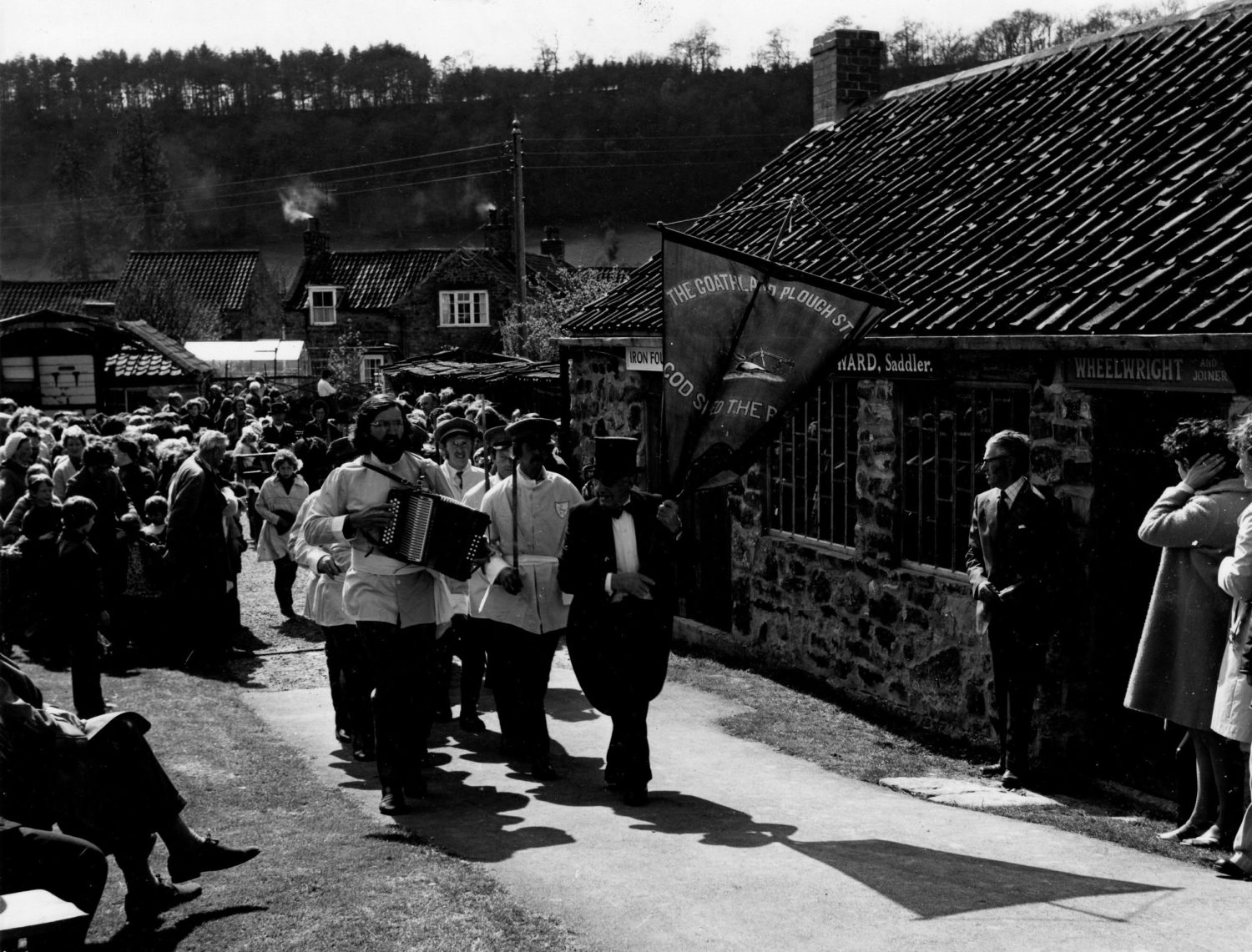Museum through Time
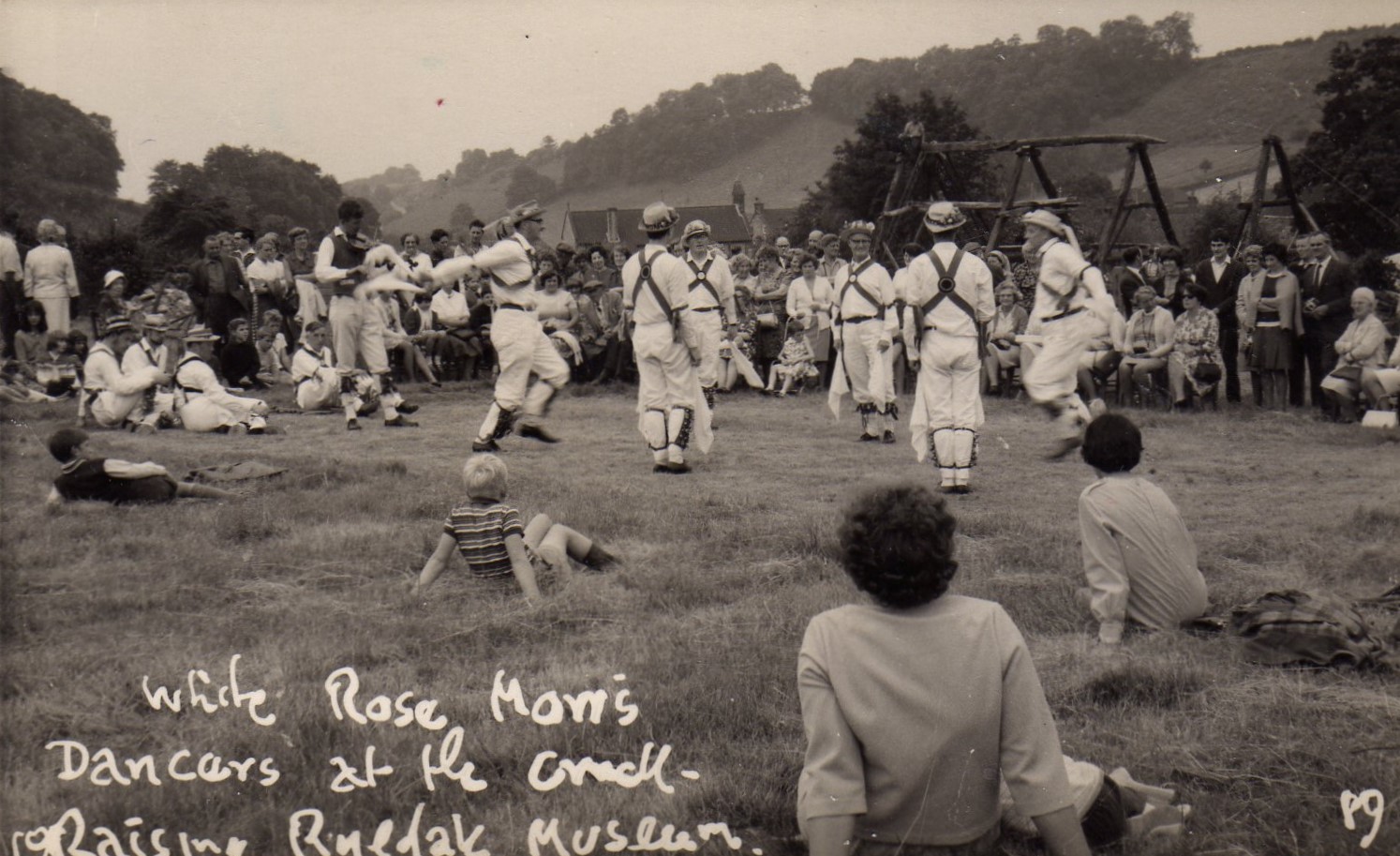
Items within the collection
Highlighting our use of the maypole through the decades, here we see children dancing around the maypole during another May Day celebration at Ryedale Folk Museum. This May Day coincided with the construction of the White Cottage, which can be seen partly finished in the background.
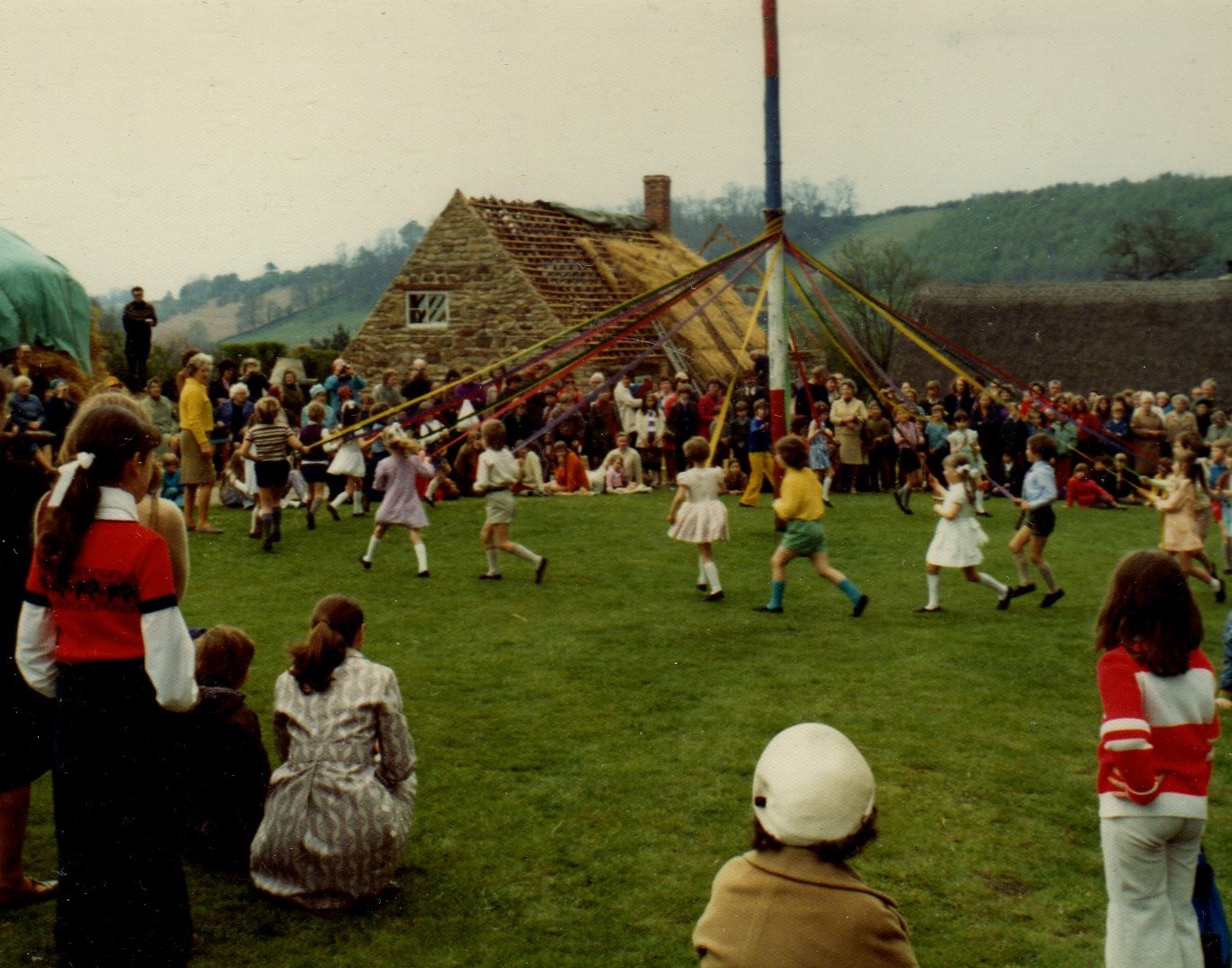
Stang End was the first building to be erected at Ryedale Folk Museum. Here we see its famous cruck frames being raised by museum curator Bert Frank and volunteers. Cruck frame buildings were a chiefly medieval building technique, and due to disuse and rebuilding they are becoming increasingly rare. Bert Frank took the initiative in 1967 to ensure this building, originating from Danby, was preserved for future generations at our museum.
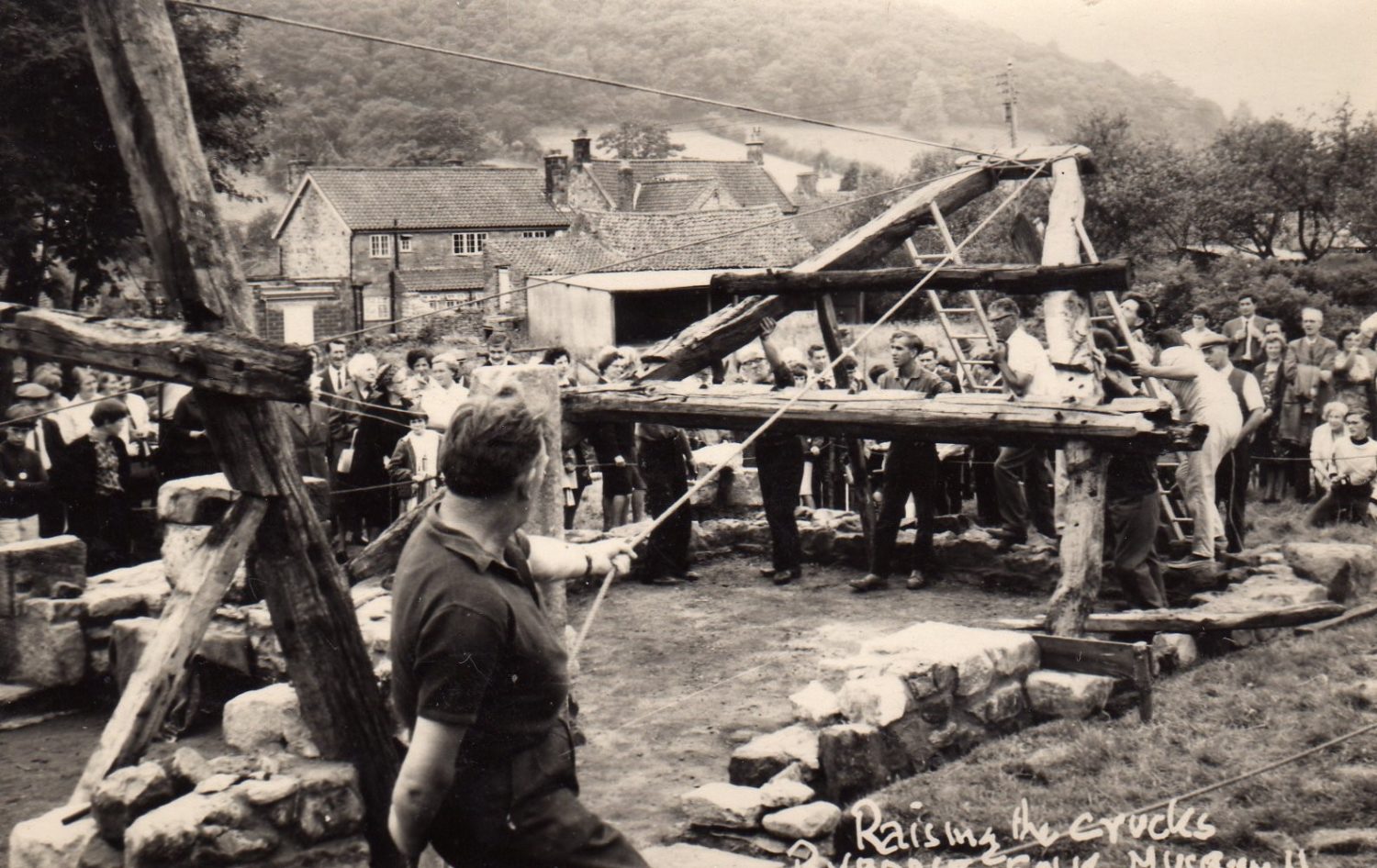
Here the Manor House is pictured part way through construction, with museum volunteer Seth Eccles already making a start on the thatching of the roof. Nine tonnes of wheat straw were used to thatch the Manor House roof in total, making it a long and strenuous job. Seth completed it in eleven weeks.
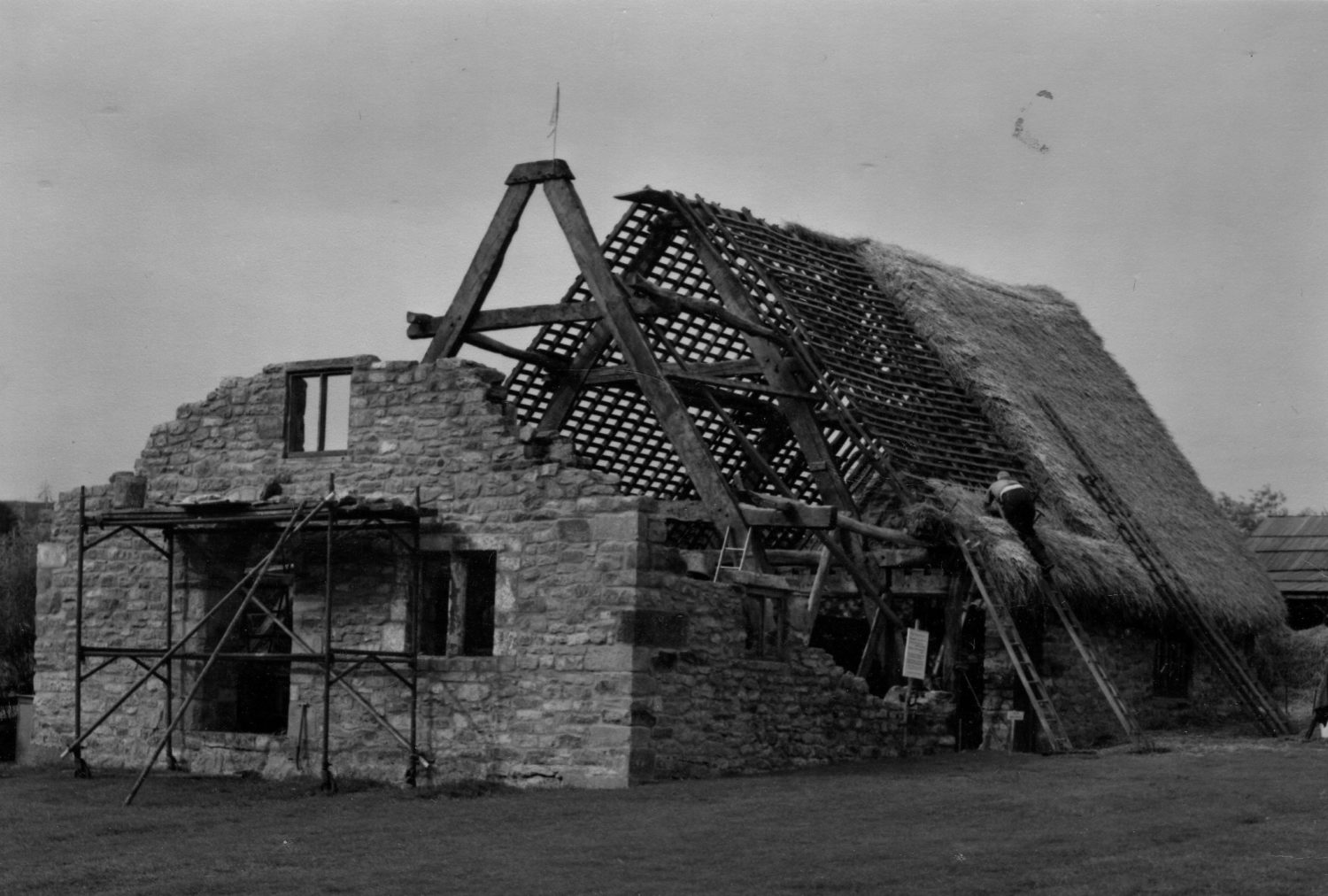
Buildings at Ryedale Folk Museum originate from across the North York Moors and surrounding areas. Stang End, our cruck cottage, started its life in Danby. In order to transfer the structure to our museum, stones were removed in a set order so that they could be reassembled again on our museum site.
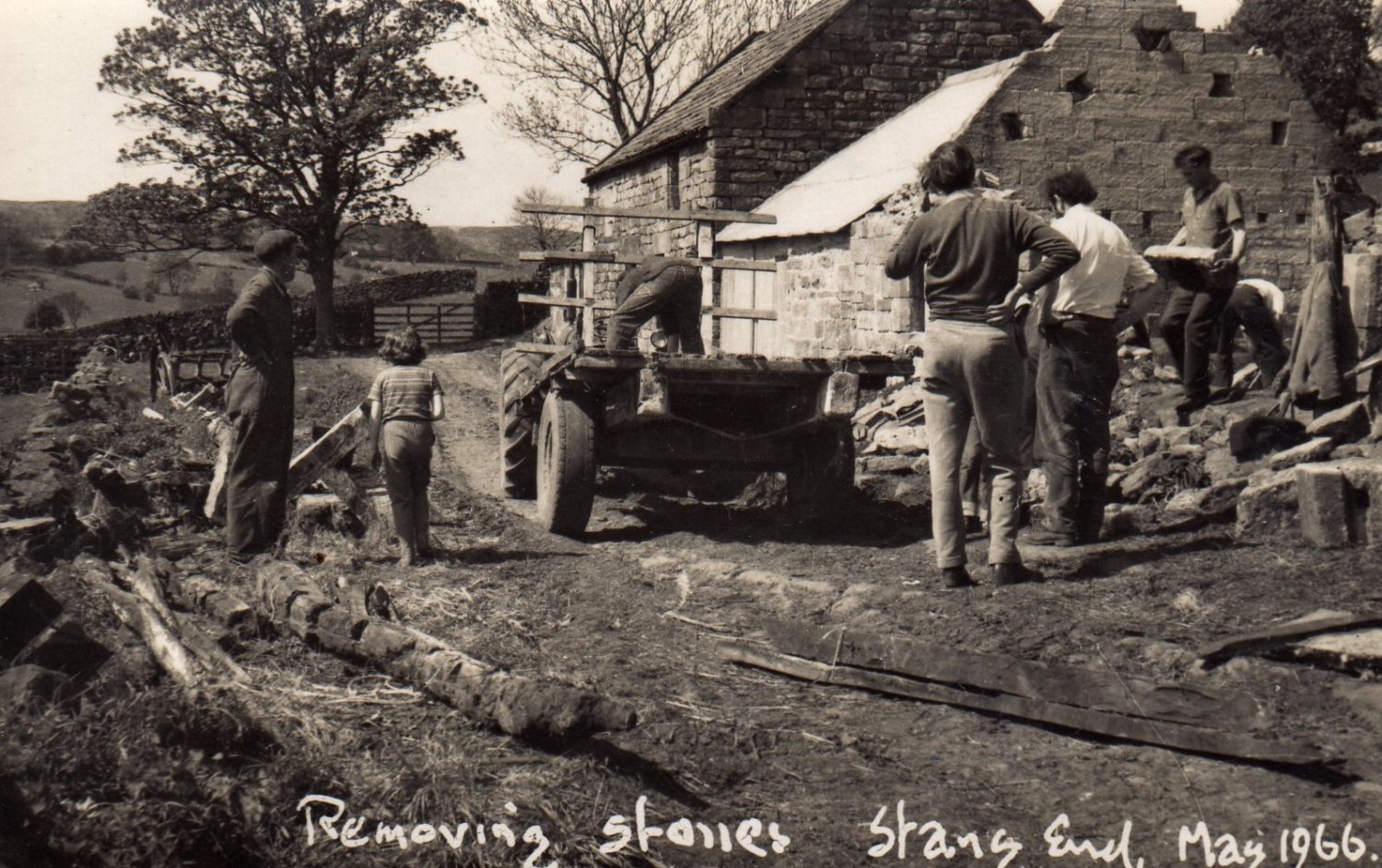
An important part of Stang End’s construction was its salt box. Salt was imperative to medieval and early modern households as something to both cook and preserve food with. The salt box can be seen to the right in this photograph. It was officially laid by the Countess of Feversham.
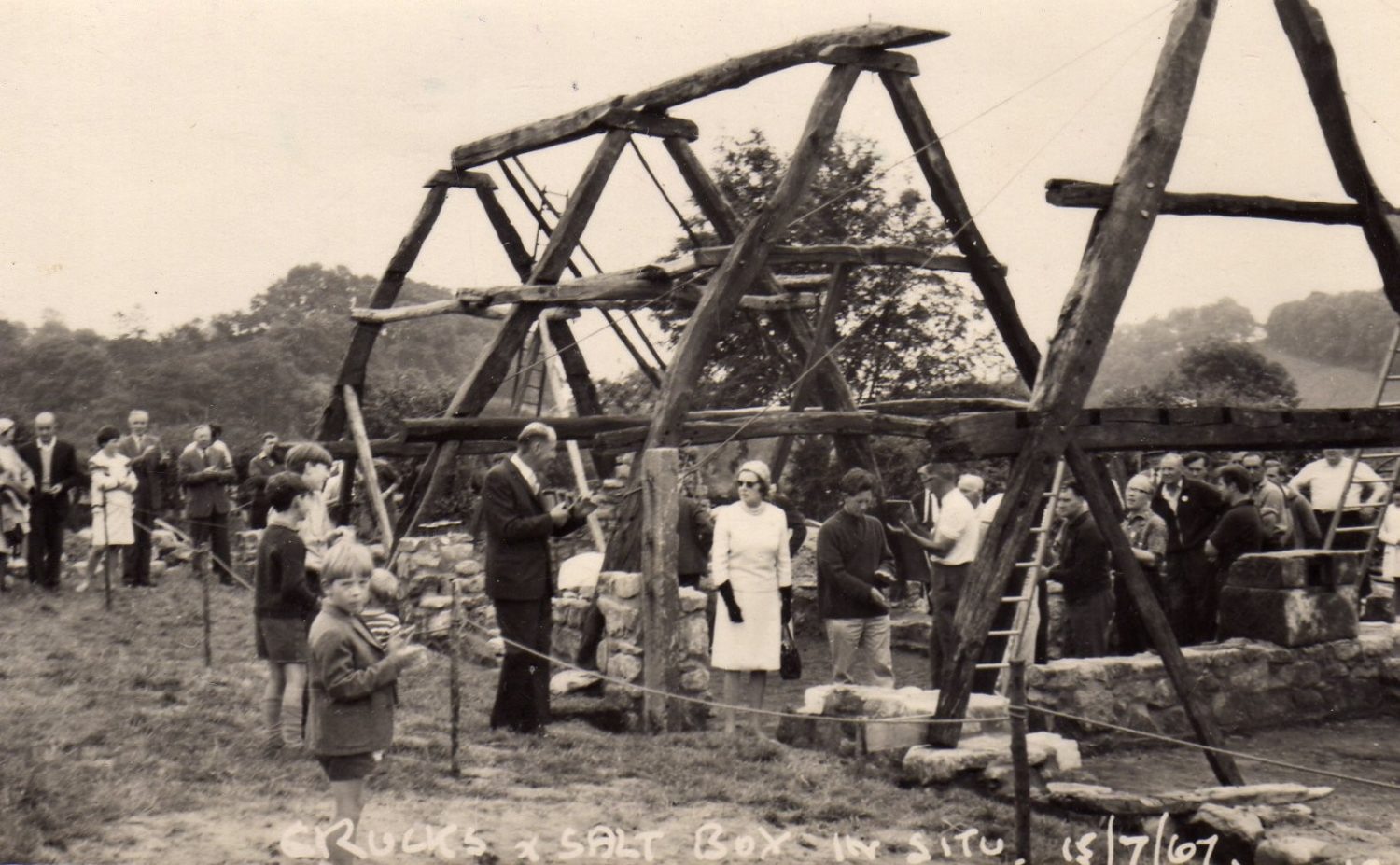
Longsword dancing is a tradition mainly found in North Yorkshire and the North East of England. Here we see a group in traditional dress performing around the maypole. They are forming the traditional circles, usually made up of 6 or 8 people, where they interlock their swords into different patterns. White Cottage can be seen in the background.
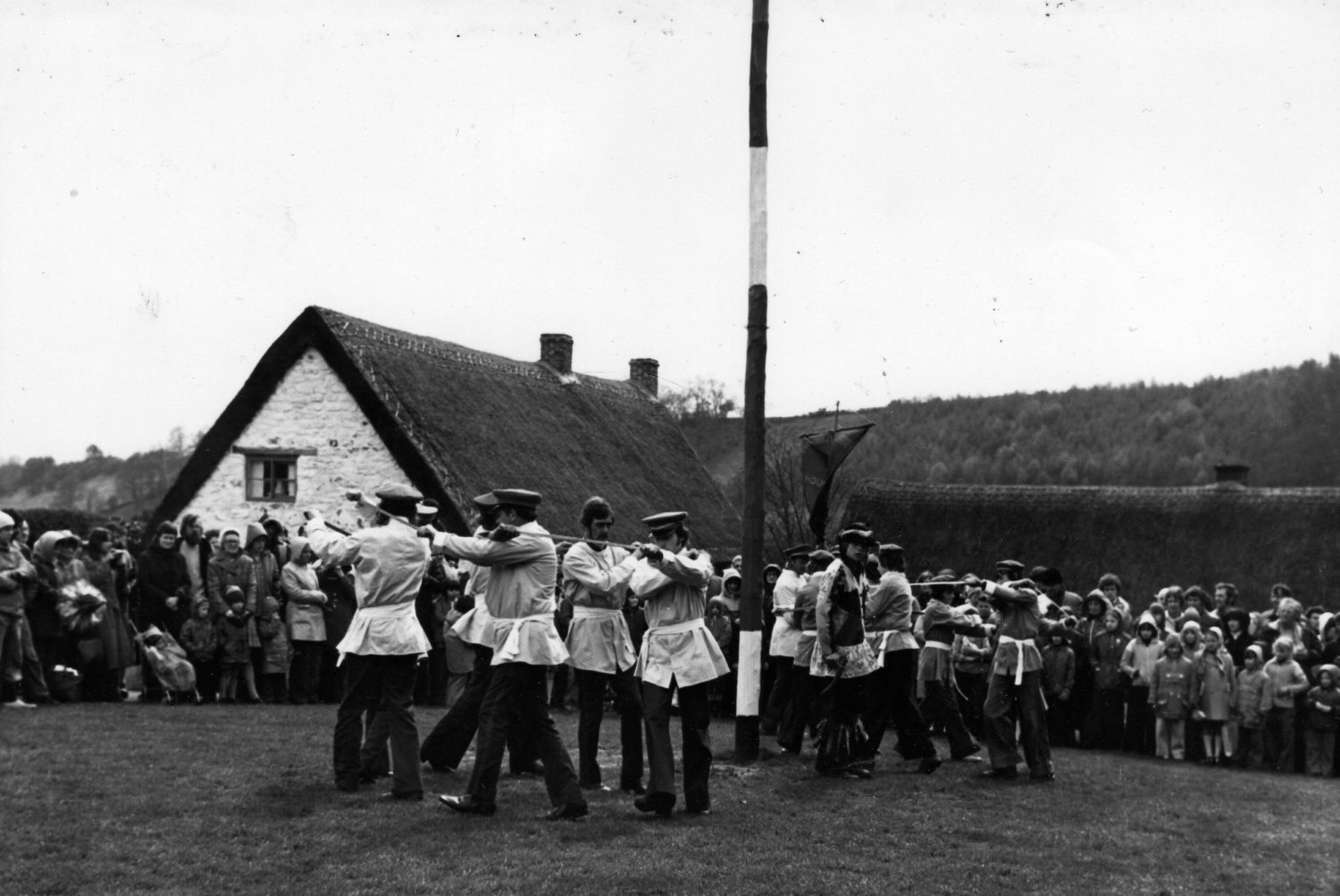
Raymond Hayes was heavily involved in the creation of Ryedale Folk Museum, working with Bert Frank to make their vision a reality. Raymond is pictured here officially opening Stang End, the first in a series of buildings to be opened on our site.
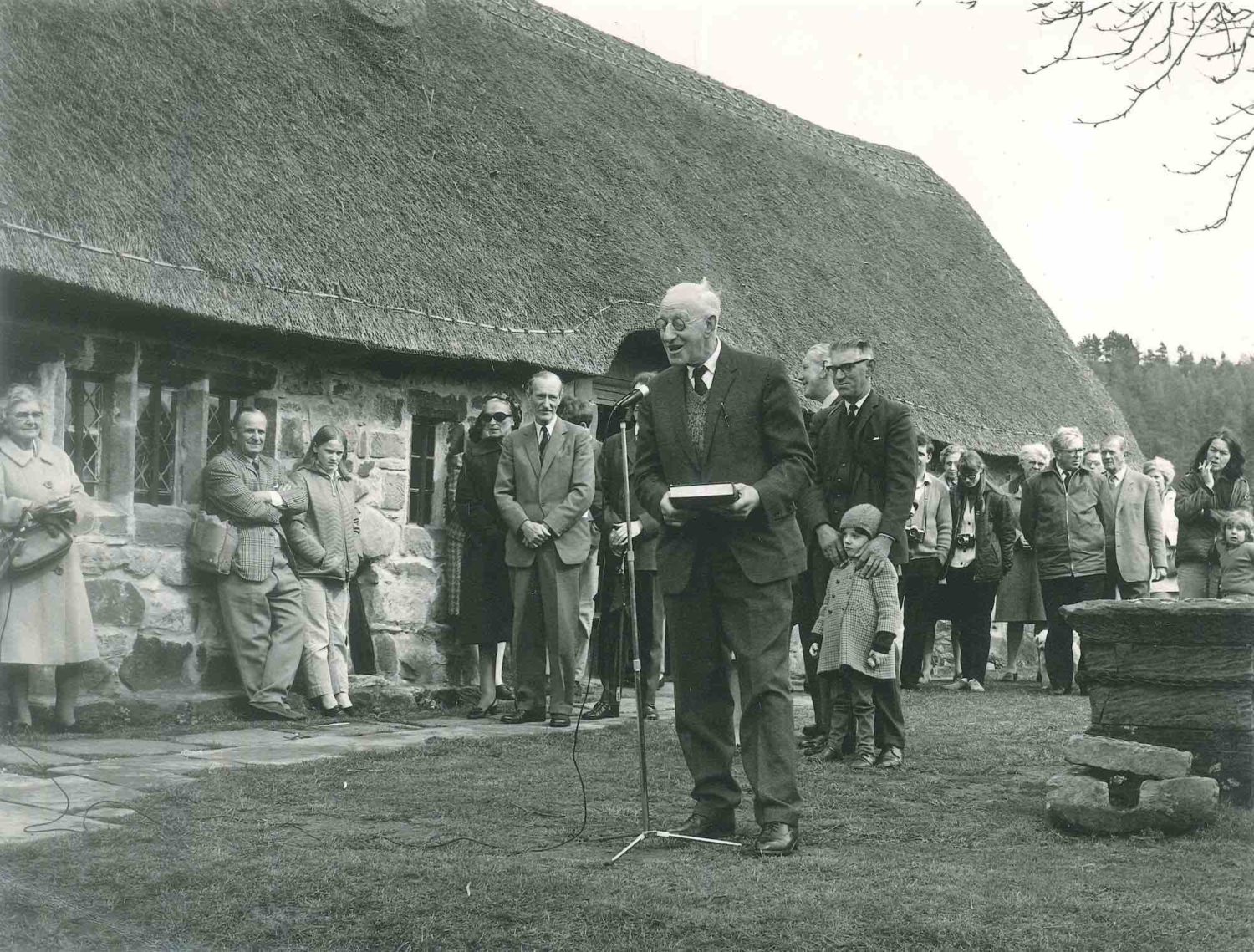
The raising of the crucks at Stang End cottage was accompanied by festivities. Traditional Morris Dancing was provided by the White Rose Morris Dancers. This traditional dance incorporates bright colours, ribbons and bells, traditionally frightening away evil spirits and welcoming in the spring. A celebration fitting for a cottage with its own witch post.

Period costume is an intrinsic part of Ryedale Folk Museum. Not only do our collection hold extensive amounts of outfits from a range of periods, but also our volunteers often don Victorian dress, Anglo-Saxon attire, or a medieval garment to partake in traditional crafts and events. Here we see a woman dressed in traditional Victorian clothing, pushing a pram from a similar period. The completed Manor House can be seen in the background.
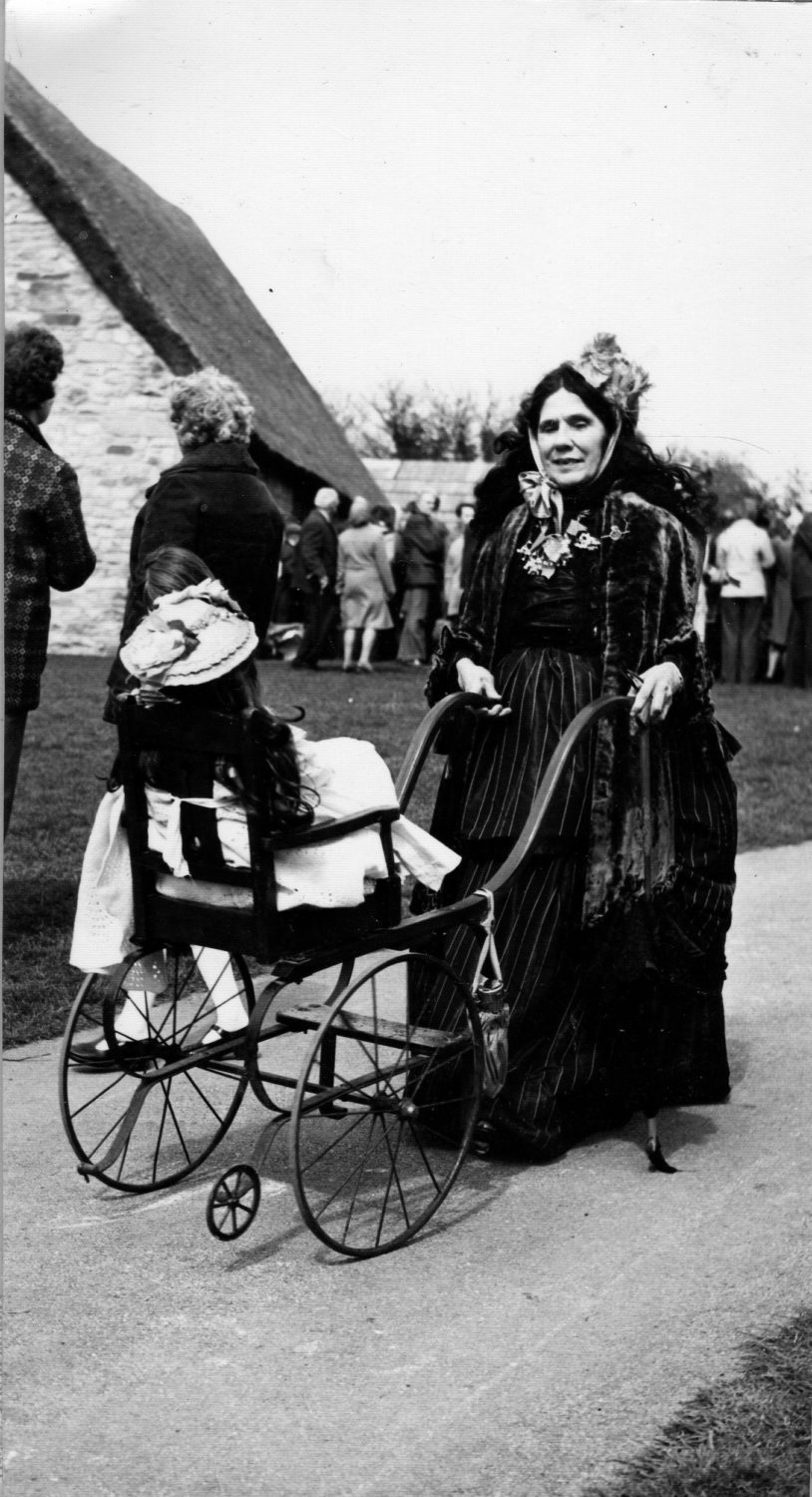
The crucks that characterise the Manor House are of the same style as Stang End cottage, but on a much grander scale. Manor houses in the Tudor period would have housed the local squire or lord, as well as his family and servants. Coming from Harome, this building was originally part of the Ros Estate before becoming part of the Feversham Estate. It now resides in our lovely museum.
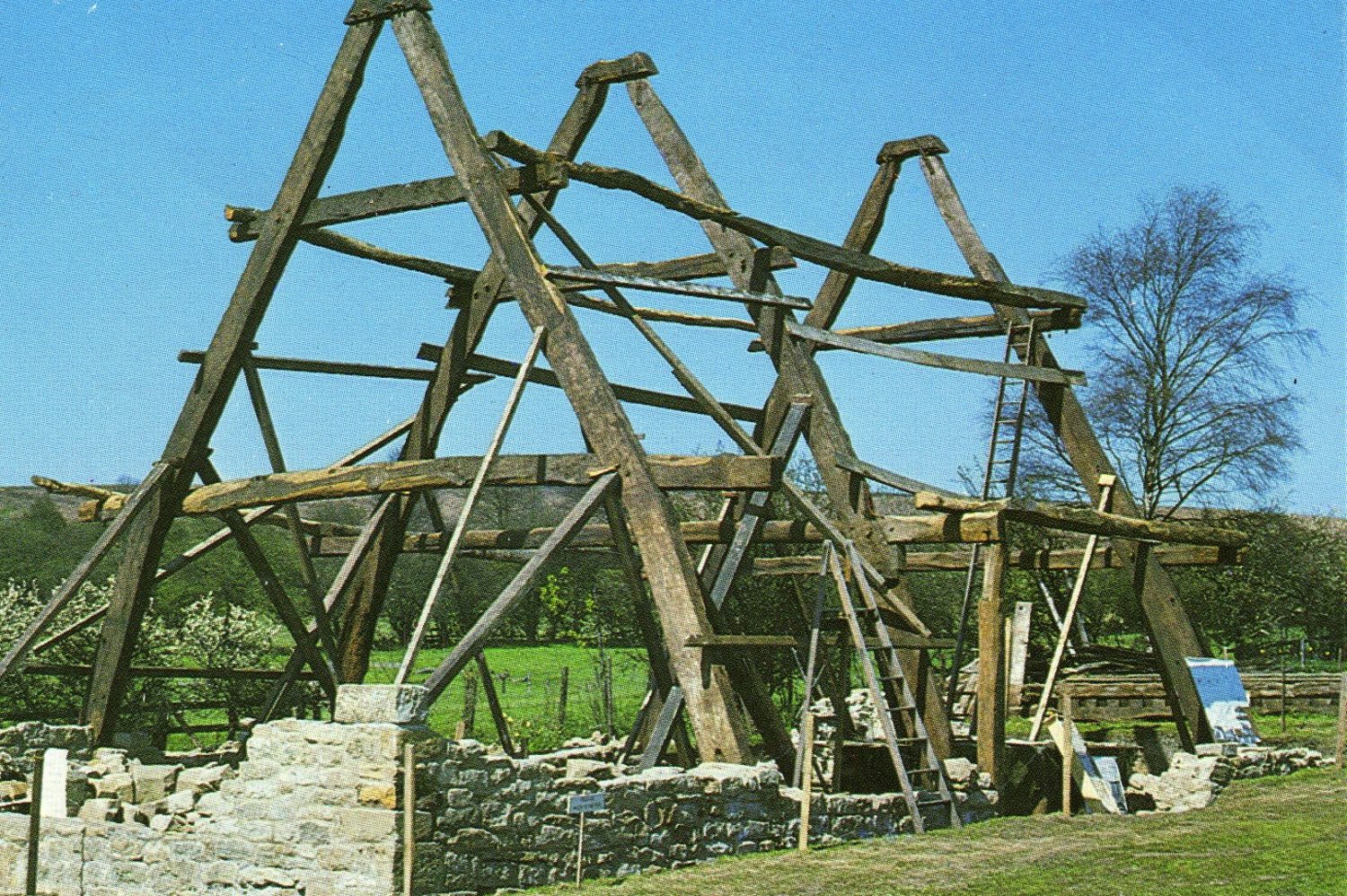
A team of volunteers work to rebuild the Manor House from Harome. Included in the group is our long standing volunteer Robin Butler, and museum curator Bert Frank. Volunteers were a significant part of the building work force, with 14 total helpers managing to raise the crucks of the manor house in one day.
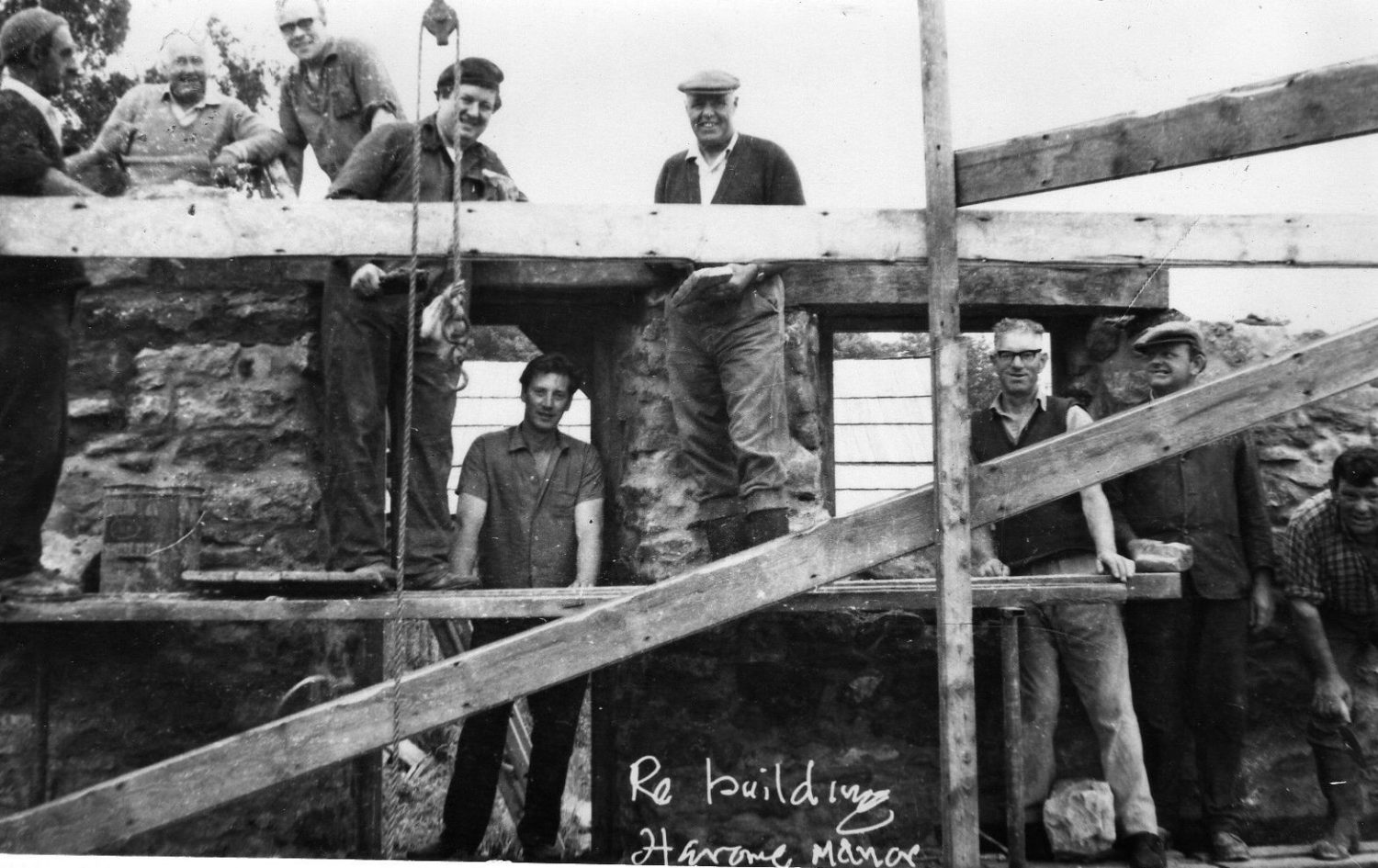
May Day celebrations are characterised by maypole dancing, a traditional dance that can be found in various cultures in Northern Europe. Ribbons are coloured yellow, red, blue and green, to symbolise run rise, sunset, the sky and regrowth. Here the tradition is carried out by local children in the village green area of Ryedale Folk Museum.
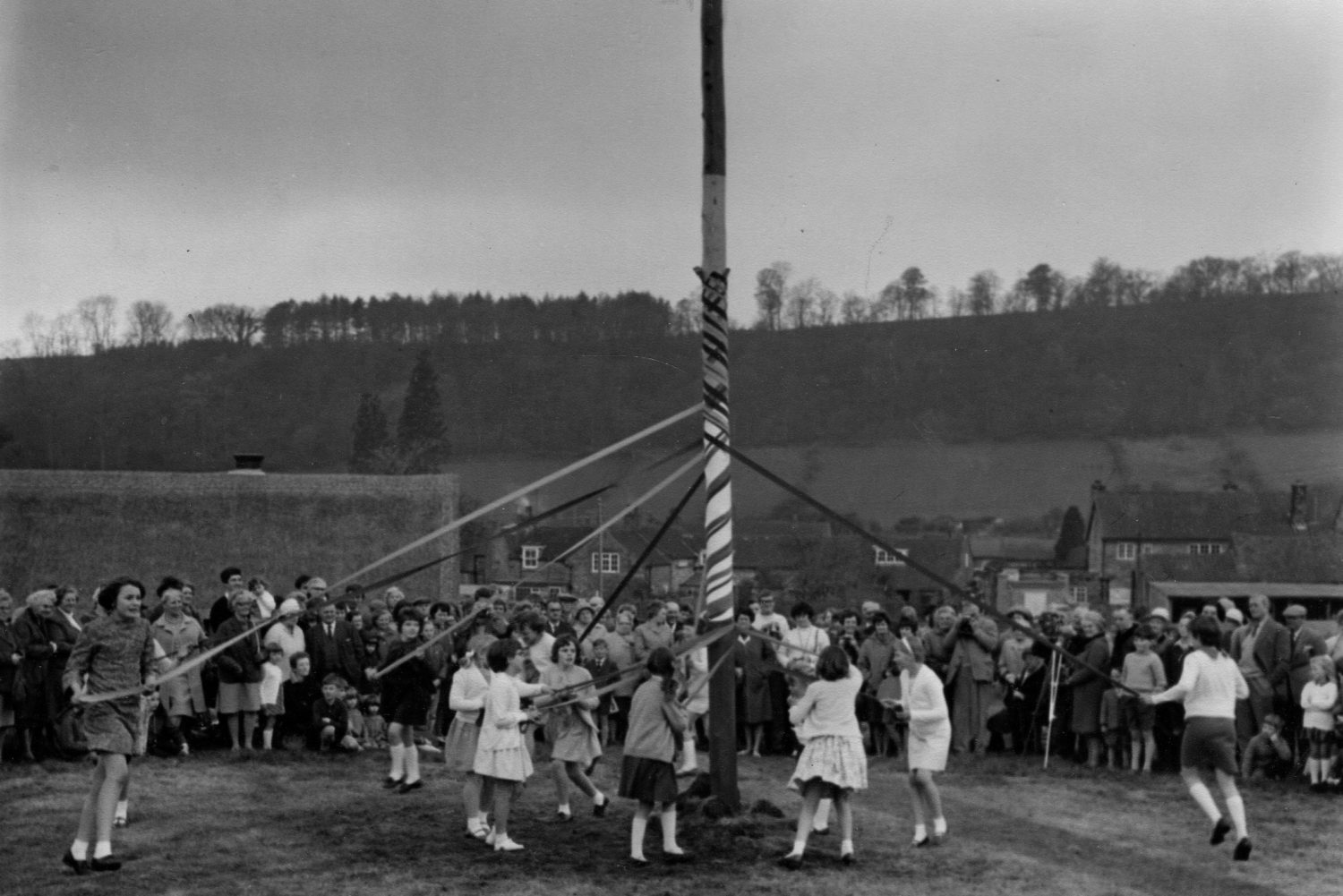
Crofter’s Cottage is Ryedale Folk Museum's example of a medieval home. It is a simple construction which housed both the family and their livestock. Unlike buildings such as Stang End or White Cottage, which were rebuilt from previous settings, this building was created on site and based on archaeological research.
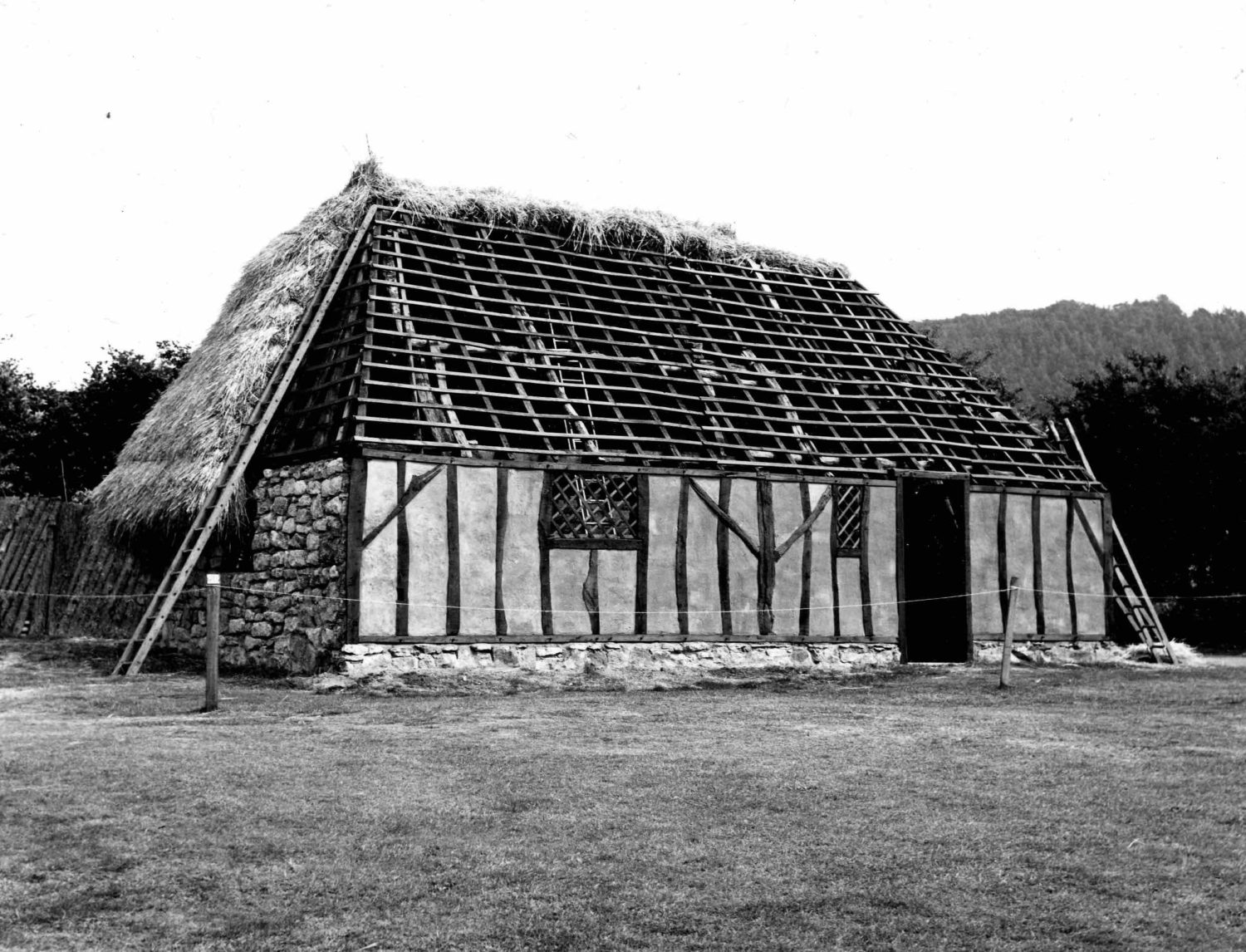
Thatched cottages would have been a common site in the past. They were traditionally made with materials such as rye, straw or rushes. In and around the North York Moors heather and bracken were also used. Here we see Seth Eccles, museum volunteer, thatching the White Cottage with wheat straw. May Day celebrations can be seen in the background, along with our Manor House and glassworks.
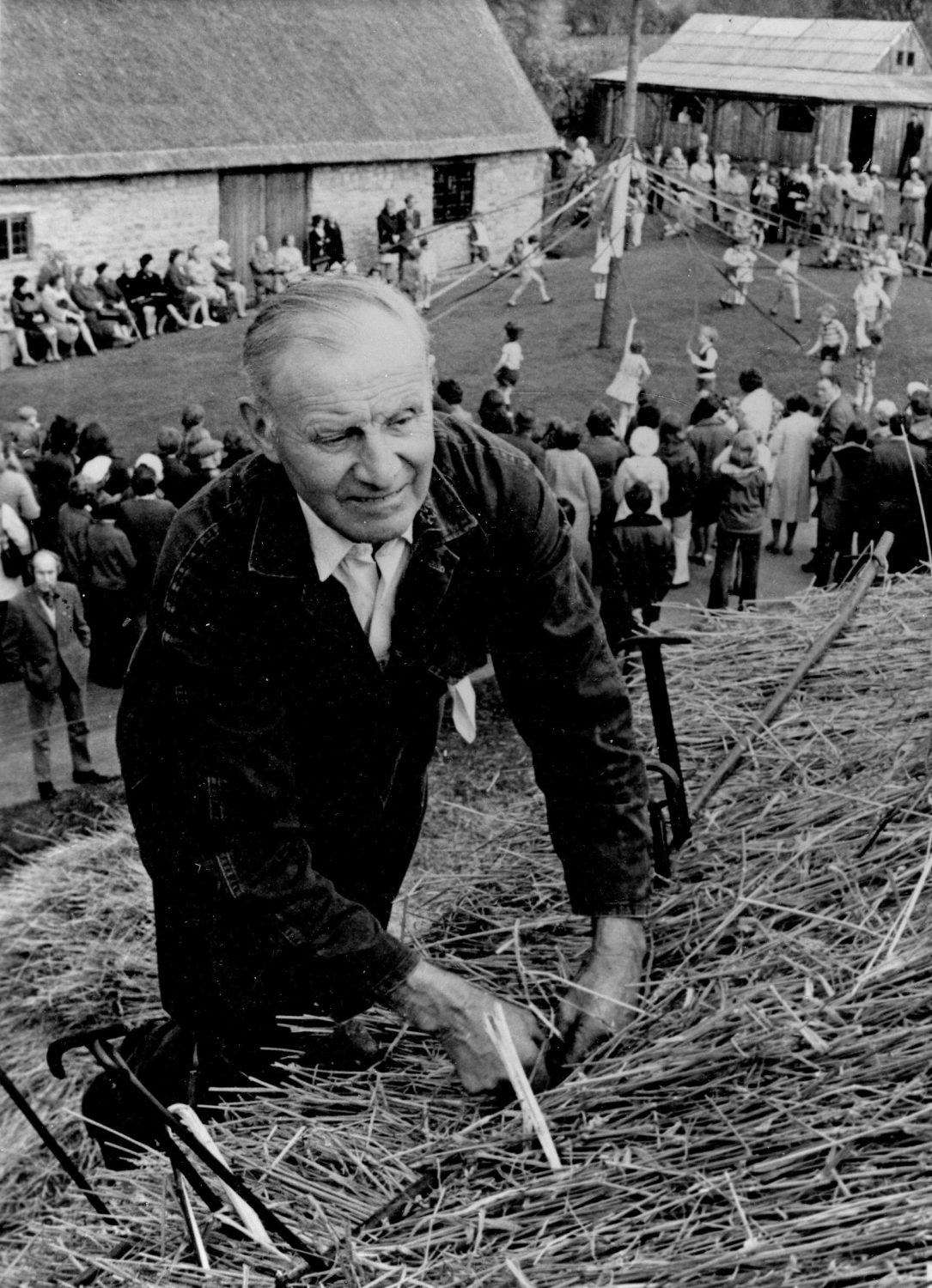
Robin Butler, long-term museum volunteer, can be seen hooping a wheel outside the blacksmiths building at Ryedale Folk Museum. The process involves heating up a metal cart tyre in order to make it expand, before placing it around a wooden cartwheel on top of a large metal ‘hooping plate’ (as can be seen in this photograph). After pouring cool water on the contraption, the metal tyre contracts, tightly fitting itself around the cartwheel.
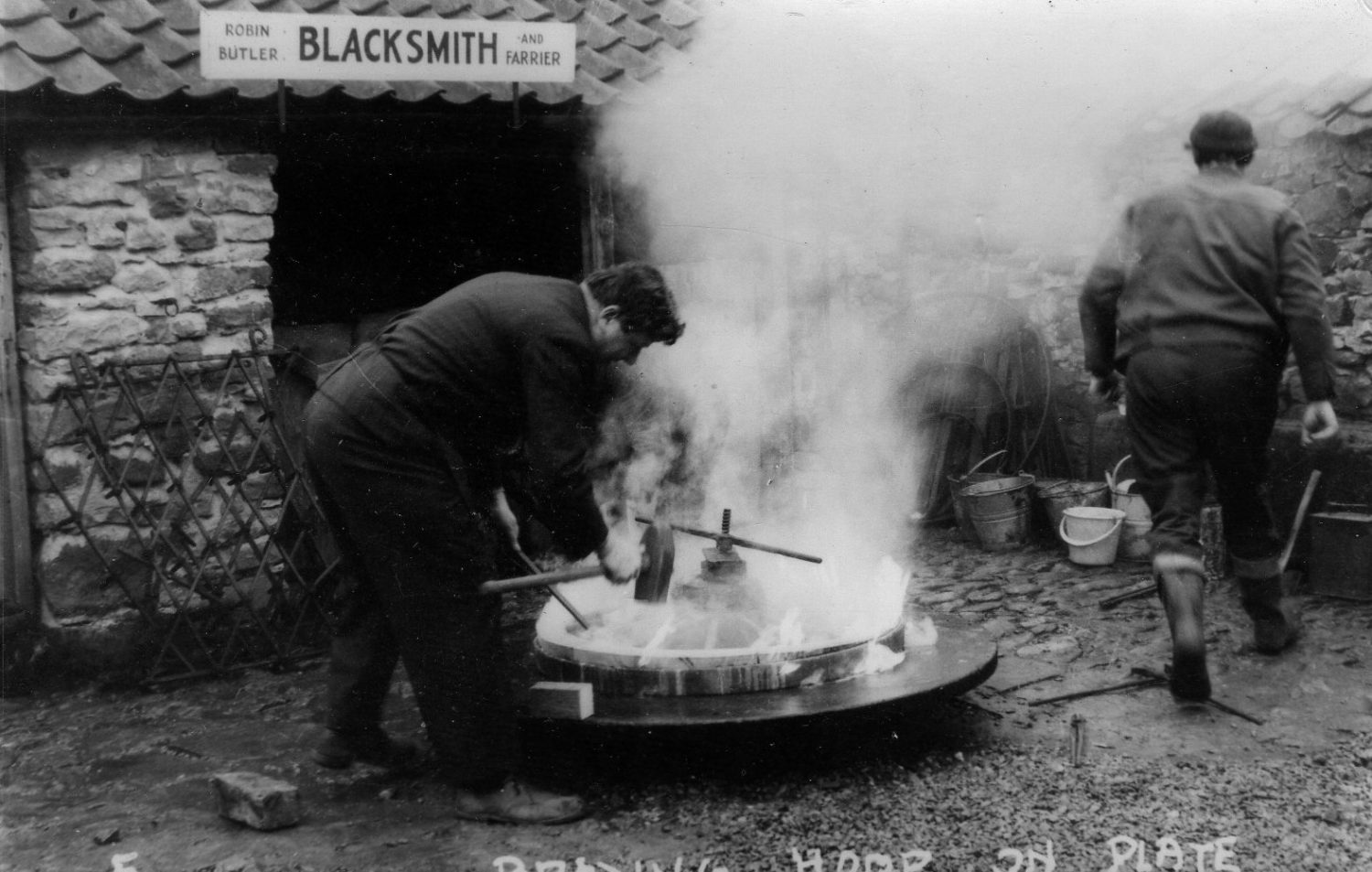
The Goathland Plough Stots are pictured forming a procession up the museum site as part of Ryedale Folk Museum’s May Day celebrations. The Plough Stots are one of the oldest traditional long sword teams in Yorkshire, performing their own dances as far back as the early 19th century. They still perform around the country to this day.
